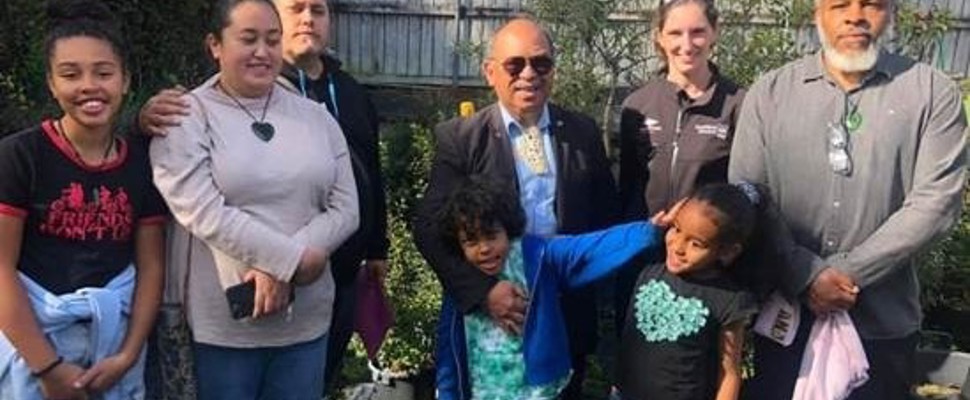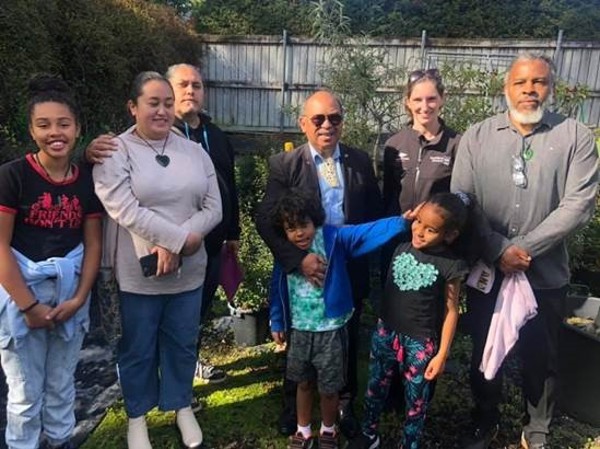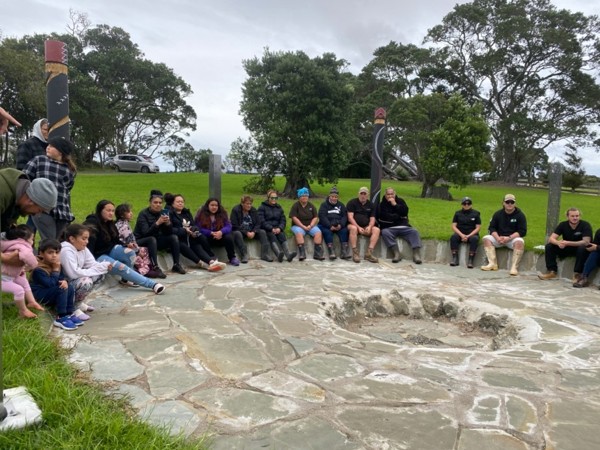
Positive working partnership with iwi proving a success for restoration
Return of threatened rātā moehau
Earlier this year Auckland Botanic Gardens supported the return of 40 rare and threatened tāonga of rātā moehau to their whenua in the rohe of Ngāti Kurī. A karakia established the protocols for the tāonga to leave the Botanic Gardens, and knowledge exchanged before the departure provided the opportunity to share the learning around plant growth and care.
The plants returned to Ngāti Kurī a few days later, where they were climatised in their native nursery before a group of 50 whānau planted them back into various locations. Each location, spanning from just south of Te Rerenga Wairua in Te Paki, to Kapo Wairua, and Te Hapua, will be monitored and checked regularly by dedicated Ngāti Kuri kaitiaki.

The rātā moehau acclimiatising in the Ngāti Kurī nursery.
Rātā moehau (Metrosideros bartlettii), also known as Bartlett's rātā, is one of Aotearoa’s rarest trees and only remains in the wild in three patches of forest in the Far North.
The species is listed as critically threatened, due to browsing by exotic mammals. But the arrival of myrtle rust into New Zealand has added another potentially devastating threat. Conserving the tāonga is vitally important.
In 2015 cuttings were taken from several of the trees and taken at haste to Auckland Botanic Gardens for propagation when it was noticed that the wild population numbers were in decline.

Members of Ngāti Kuri who came to collect the Rātā Moehau from Auckland Botanic Gardens.
Since then, Auckland Botanic Gardens have been growing these plants and working with Ngāti Kurī to plan for their return home. This plan saw some of the propagated plants return to the Far North, some kept in an ex-situ conservation collection at Auckland Botanic Gardens, and some sent as backup collections to botanic gardens in Dunedin and Wellington (where there is less of a threat from myrtle rust than there is in the northern parts of New Zealand).
Botanical Records and Conservation Specialist, Emma Bodley says the plants in the wild are so far apart a pollinator would rarely make the trip between trees to pollinate them. The tree is self-incompatible so setting viable seed is difficult in the wild.
Five of the Rātā Moehau have been planted at Auckland Botanic Gardens. Each is a cutting from a different individual plant. The plants are planted close enough together to allow cross-pollination and the setting of viable seed for Ngāti Kuri to grow and add diversity back into the wild.

Participants in the whānau planting day.
Ngāti Kuri are committed to a long term restoration and conservation plan for the tāonga, and are mobilising quickly through research and development platforms including with the support of Manaaki Whenua to establish the right conditions for the tāonga to return back into the wild. Ngāti Kuri have created enduring partnerships and relationships to enable this work to be scaled up within the next 3-5 years and the collaboration between Ngāti Kurī and the Auckland Botanic Gardens will ensure the survival of this beautiful and rare tree for future generations.